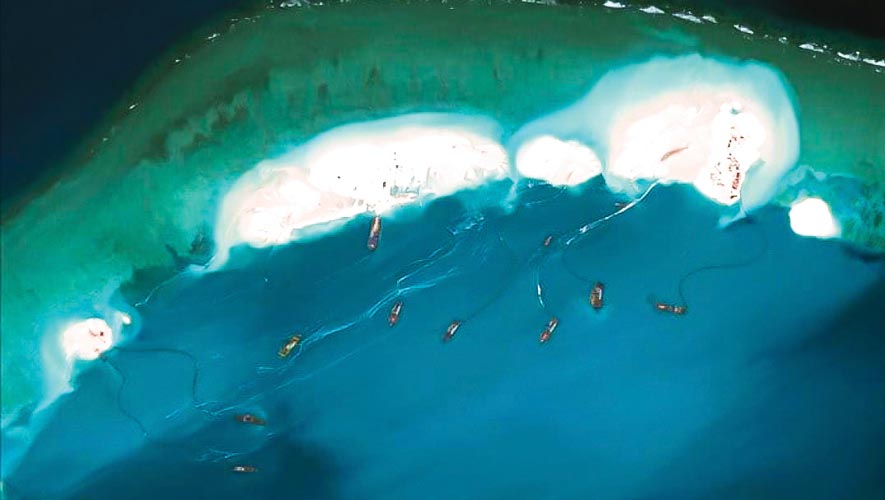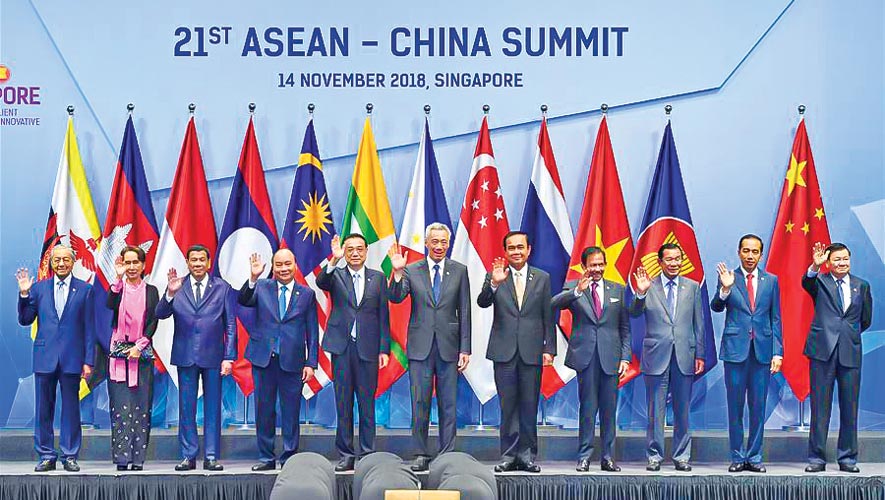While the storm over the sea rages on, US and Asean member states seek ways to tame China’s claims at the Shangri-La Dialogue
For the latest Cambodian Business news, visit Khmer Times Business
On May 21, Taiwan declared it will continue its “humanitarian” search and rescue work in South China Sea, where it possesses the largest of some 500 islets.
Reports state that the Coast Guard Administration will “deepen its cooperation mechanism” with surrounding countries. China, the most powerful claimant to the 3.5 million square kilometre sea that’s rich in fisheries and fuel reserves, calls Taiwan its own despite self-rule of some 70 years.
Officials in Beijing demand that other countries, including the four Southeast Asian states with competing claims to the sea, Brunei, Malaysia, the Philippines and Vietnam, avoid any formal relations with Taiwan.
But joint search-and-rescue work, even if not publicly supported by other countries, would give Taiwan a welcome name abroad for cooperation rather than for extending the sovereignty dispute. Taiwan has tried over the past decade to stand out from China, which has bilateral issues with an array of countries, by spreading its culture, disaster relief and economic aid overseas.
“The best way at the moment for us to make entry is truly through humanitarian rescue work,” said Huang Chung-ting, a Chinese political and military affairs assistant research fellow with Taipei-based policy analysis nonprofit Institute for National Defence and Security Research. “Only under this framework can we possibly raise the odds of South China Sea cooperation with surrounding countries and even the US.”
According to news reports, acting Secretary of Defense Pat Shanahan would unveil US’ new “Indo-Pacific strategy” at the Shangri-La Dialogue, which will be held in Singapore today.
Maritime news and analysis USNI News quoted assistant secretary of defence for Indo-Pacific security affairs Randall Schriver, at a roundtable meeting in Malaysia in April, as stating that “our National Defence Strategy (NDS) and National Security Strategy (NSS) identify the Indo-Pacific as the priority theater, and I think Secretary Shanahan will talk about that at Shangri-La and what it means to be a priority theater.”
Both the NDS and NSS articulate a regional strategy of deep engagement with Asia. In particular, they warned that China was seeking to displace the US and in so doing establish a Sino-centric order in the region through economic inducements, information operations and military coercion.
These reports were highly critical of Chinese actions in South China Sea, particularly regarding Beijing’s growing military presence in and around Spratly Islands, which “endangers the free flow of maritime trade, threatens the sovereignty of other nations and undermines regional stability.”
Assistant Secretary Schriver is the point man on the new US Indo-Pacific strategy, so his words should be closely watched as a diviner of Shanahan’s likely speech at the dialogue.
In a talk given last August to the American Enterprise Institute, Shriver described the FOIP (free and open Indo-Pacific) as not being directed at “any particular country but there should be little doubt that much of the Chinese behaviour is demonstrating objectives that run counter to our objectives for a free and open Indo-Pacific.”
“By free,” he argued, “we mean nations will be free from coercion and able to protect their sovereignty.”
He expanded on these comments at the April roundtable in Malaysia. “It’s our intent to make sure that no one country can change international law or the status of South China Sea,” he said. And specifically regarding China’s illegal island-building campaign in South China Sea and subsequent militarisation of these artificial islands, Schriver stated that while “there’s not necessarily an expectation that they roll back the land reclamation … we hope that they will not deploy additional military systems and in fact remove the military systems on these outposts”.
US actions are already putting these words into action. The US Navy has upped its game when it comes to conducting freedom-of-navigation operations (FONOPS) in South China Sea.
It undertook at least eight regional FONOPs in 2018, sailing within 12 nautical miles of reef and islands claimed by China as sovereign territory. This month alone, the navy conducted two FONOPs in South China Sea, one near the Spratly Islands and the other near the Scarborough Shoal, seized by China in 2012.
In addition, despite all of Trump’s “America First” posturing, Washington is stepping up security cooperation with its Indo-Pacific allies.
The US military has expanded its annual Cobra Gold exercises with Thailand, nearly doubling the number of US military personnel involved. At the same time, the US “disinvited” China from its Rim of the Pacific 2018 exercises.
So, let’s see what Secretary of Defence Pat Shanahan’s new “Indo-Pacific strategy” at the Shangri-La Dialogue is about, and hope that US, China and ASEAN countries agree on the normalisation of the South China Sea disputes.




